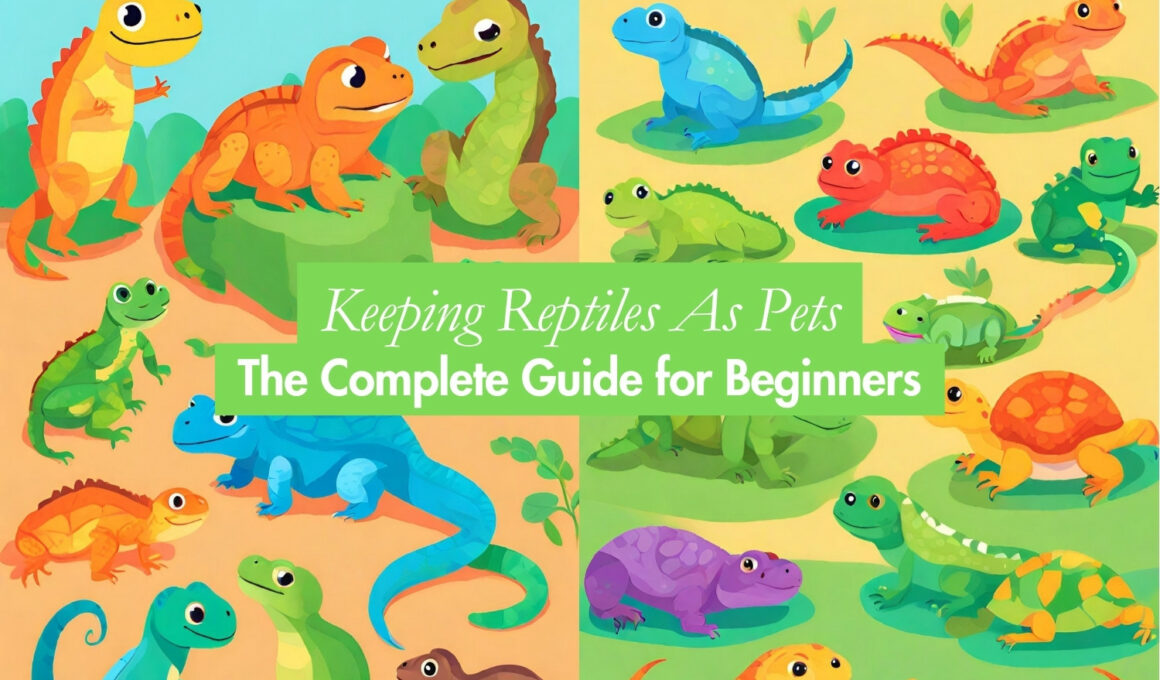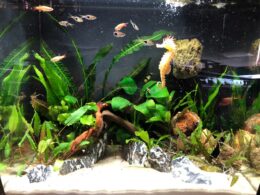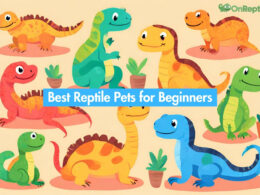In this article Show
I’ve always been drawn to the unique charm of reptiles, from the intricate scales of a gecko to the mesmerizing eyes of a snake. As an avid pet owner, I’ve spent countless hours understanding these incredible creatures. And when I’m not looking after my scaled friends, you’ll find me buried in a book or an article about them.
Now, I get it. The world of reptiles can seem vast and a tad overwhelming for beginners. Questions like, “Which reptile is right for me?” or “How do I set up the perfect habitat?” might be swirling in your head. Well, you’re in the right place!
This guide aims to introduce you to the rewarding journey of reptile ownership. And trust me, while it might seem complex at first, with a bit of guidance, it’s a venture anyone can undertake.
Why Consider Reptiles as Pets?
Plenty of furry and feathery companions are out there, so you might wonder, “Why opt for a reptile?” Let’s explain some compelling reasons that make these cold-blooded buddies stand out.
Low-Allergenic Pets
Ever walked into a room and suddenly started sneezing because of pet dander? With reptiles, this is rarely an issue. They’re among the best companions for those who are sensitive to allergens. Being free from fur and feathers means a considerably lower risk of triggering allergies.
Minimal Vocal Noise
You’ll appreciate this if you’ve ever been jolted awake by a barking dog or a yowling cat in the wee hours. Reptiles are generally silent pets. Sure, some might hiss when threatened, but you won’t be getting noise complaints from neighbors about your pet snake or gecko!
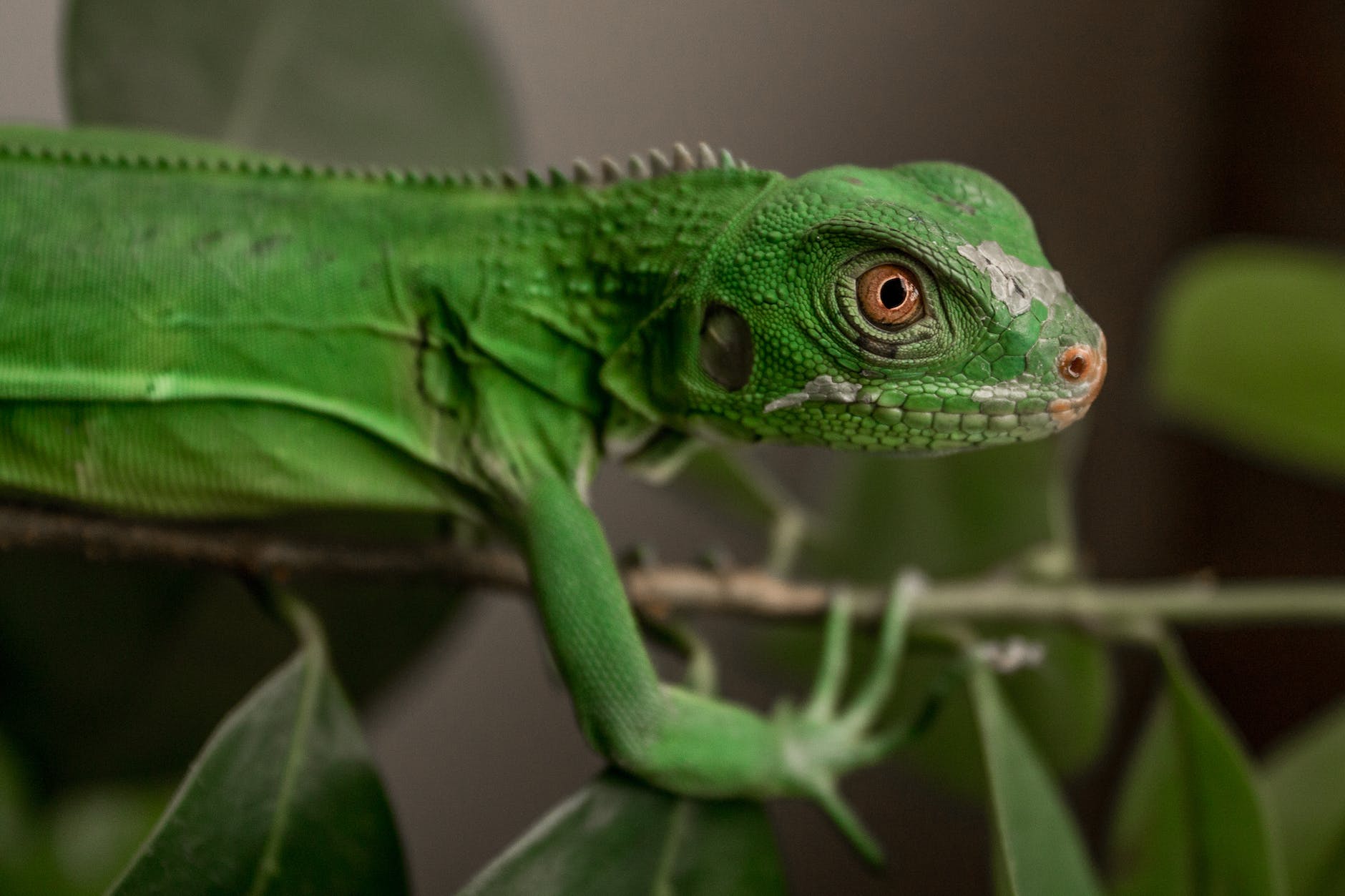
Unique Aesthetic and Educational Appeal
Reptiles are more than just pets; they’re a gateway to a world of learning. Observing their behaviors and understanding their unique biology can be endlessly fascinating. Plus, their distinctive aesthetic appeal is not denied, turning an ordinary room into a captivating mini-ecosystem.
Variety of Species Catering to Different Care Levels
Whether you’re a beginner looking for a low-maintenance pet or a seasoned enthusiast eager to take on a more challenging species, there’s a reptile for you. From easy-to-care-for leopard geckos to the more intricate needs of chameleons, there’s a breadth of options available, each offering its own set of rewards.
In short, choosing a reptile as a pet can offer a unique and enriching experience. With their diverse characteristics and care requirements, a perfect reptilian companion awaits every aspiring pet owner.
Types of Reptiles Suitable for Beginners
Stepping into reptile ownership can be thrilling, but starting with beginner-friendly species is essential. These reptiles are known for their hardy nature, relatively simple care routines, and overall friendliness. Let’s explore some top picks for those new to reptiles.
1. Leopard Geckos
Overview
Originating from the deserts of Asia and the Middle East, Leopard Geckos are one of the most popular choices for first-time reptile owners. They easily win hearts with their docile nature, vibrant colors, and expressive eyes.

Care and Maintenance
- Habitat: They prefer a warm environment, with a temperature gradient ranging from 75°F to 90°F. Heating mats work well for them.
- Diet: Primarily insectivores, they thrive on a diet of crickets, mealworms, and occasional treats like waxworms.
- Handling: Regular but gentle handling helps them become more accustomed to their human companions.
2. Corn Snakes
Overview
Hailing from the southeastern United States, Corn Snakes are known for their calm demeanor and beautiful patterns. They’re non-venomous and can live up to 20 years with proper care.
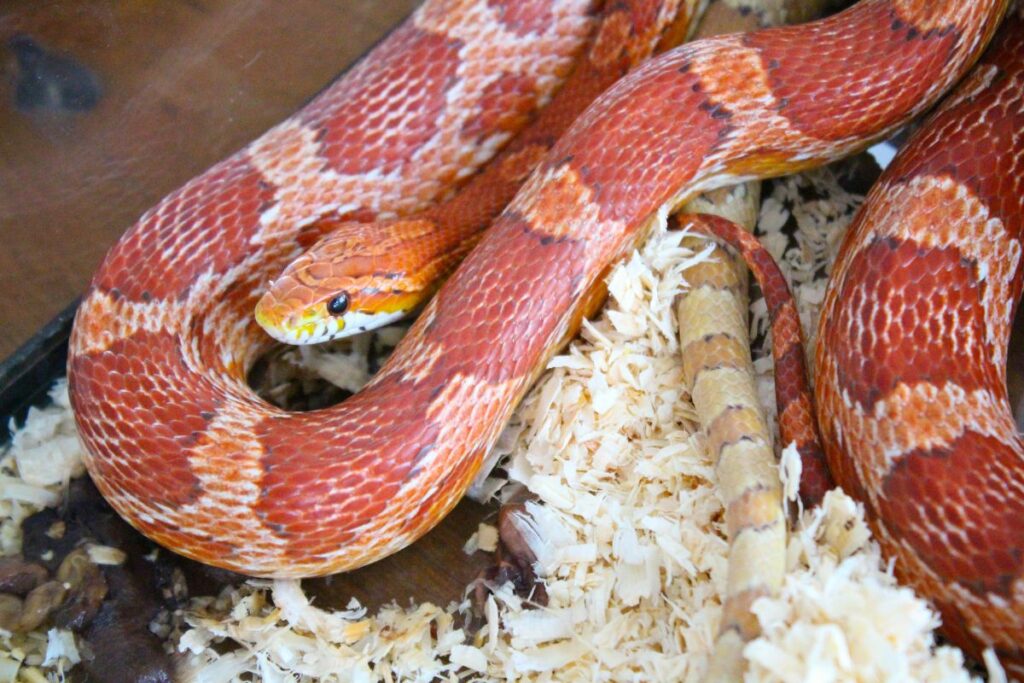
Care and Maintenance
- Habitat: A 20-gallon terrarium is typically sufficient. Ensure you have both warm (85°F) and cool (70°F) areas in their habitat.
- Diet: They eat pre-killed or frozen-thawed mice, typically once a week.
- Handling: Start with short sessions and gradually increase the time as they become more comfortable.
3. Bearded Dragons
Overview
Native to Australia, Bearded Dragons are social lizards with a characteristic “beard”. They’re versatile and adapt well to human interaction.
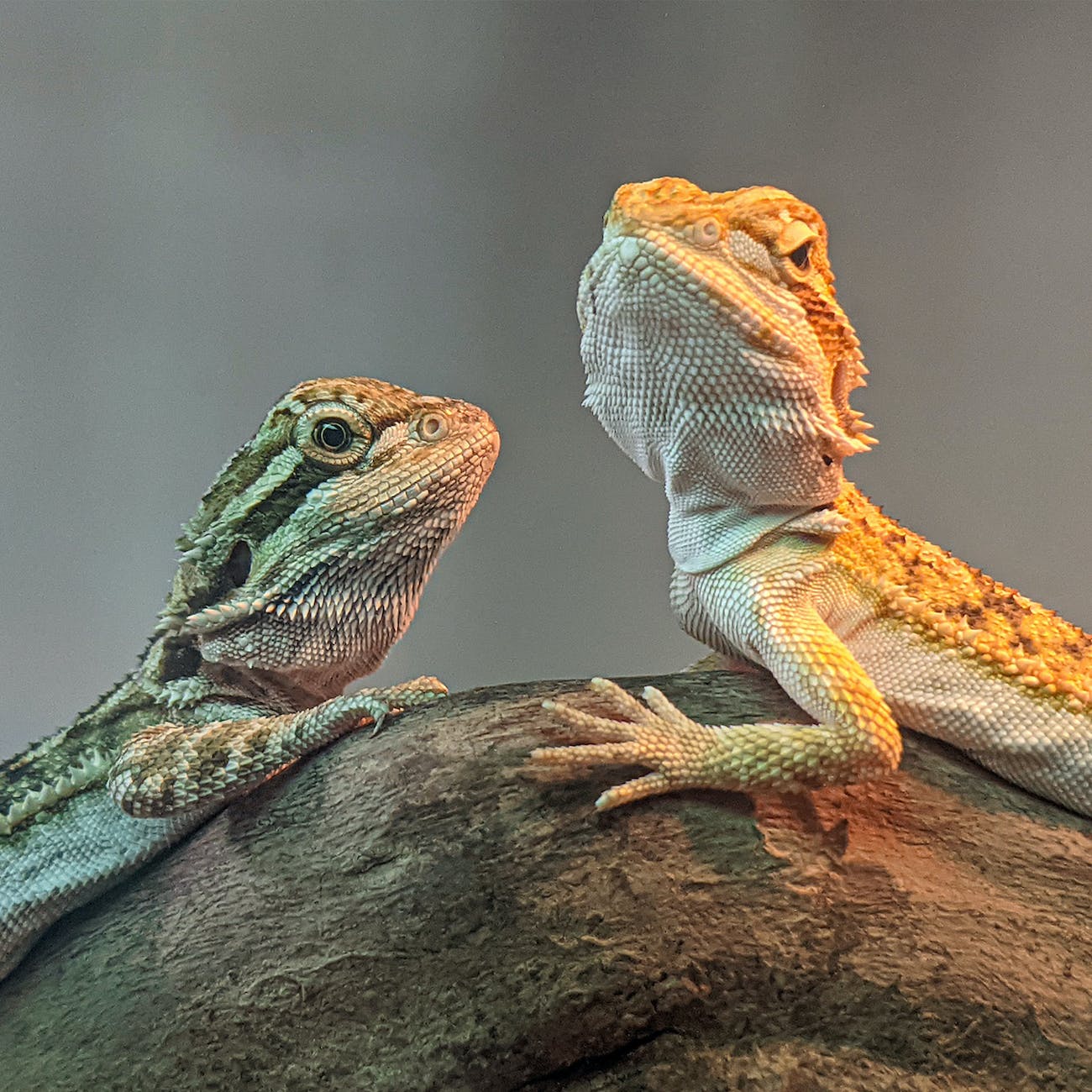
Care and Maintenance
- Habitat: A spacious tank (40-55 gallons) with UVB lighting is ideal. They appreciate a basking spot that reaches 95°F.
- Diet: They’re omnivores. Offer a mix of insects, greens, and specialized bearded dragon pellets.
- Handling: Regular interaction helps in building trust. Always approach them from the front so they can see you.
4. Russian Tortoises
Overview
A smaller species of tortoise, Russian Tortoises are robust and active. They can live for over 50 years, making them a long-term commitment.
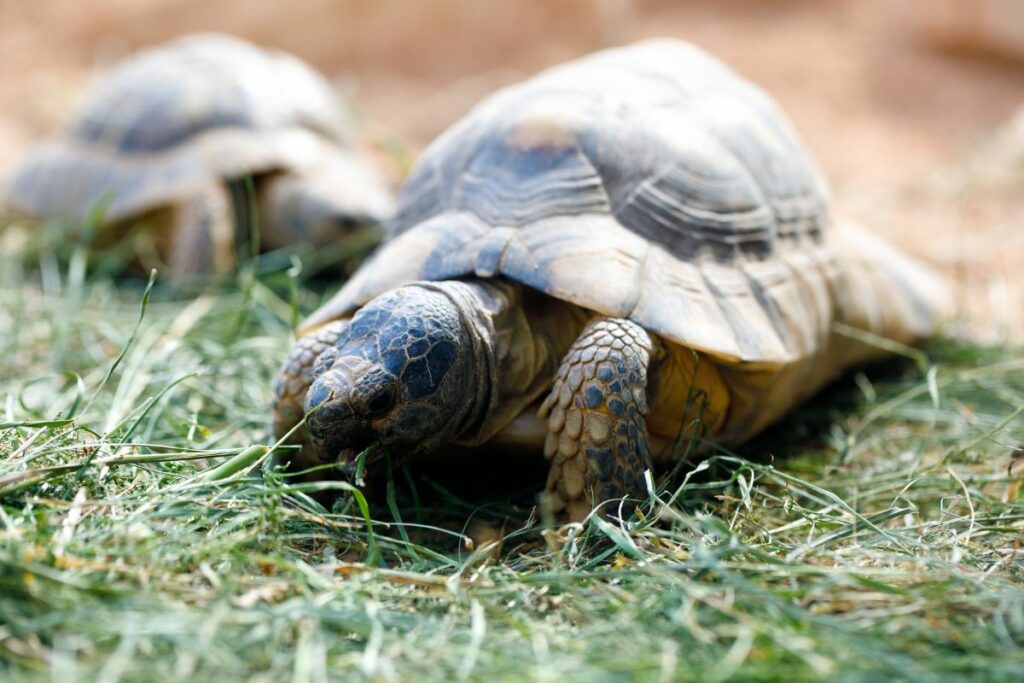
Care and Maintenance
- Habitat: Outdoor enclosures are ideal, but if indoors, a 40-gallon tank works. Ensure they have access to natural sunlight or UVB lighting.
- Diet: They primarily eat leafy greens, with occasional fruits.
- Handling: Limit handling, as they prefer to explore on their own. But when necessary, support their entire body.
5. White’s Tree Frog
Overview
Originating from Australia and Indonesia, White’s Tree Frogs are beloved for their docile nature and unique green-blue hue. They’ve earned the nickname “dumpy frog” due to their chubby appearance, which many find endearing.
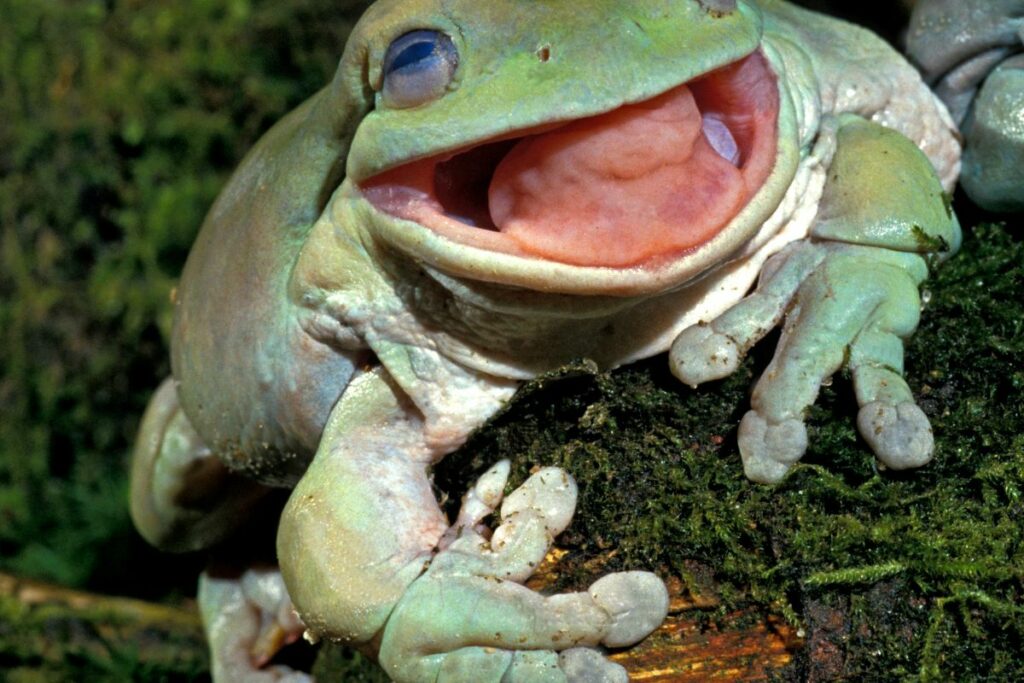
Care and Maintenance
- Habitat: These frogs prefer a vertically oriented terrarium, given their propensity for climbing. Maintain humidity levels at 50-60% and temperatures between 75°F and 80°F.
- Diet: They are insectivores, enjoying a diet of crickets, moths, and other insects.
- Handling: Minimize handling. Ensure your hands are clean and moist to prevent their delicate skin damage.
6. Red-Eared Slider Turtle
Overview
One of the most popular aquatic turtles, Red-Eared Sliders are recognized by the distinctive red mark near their ears. Native to the southern U.S., they can live for over 20 years with proper care.
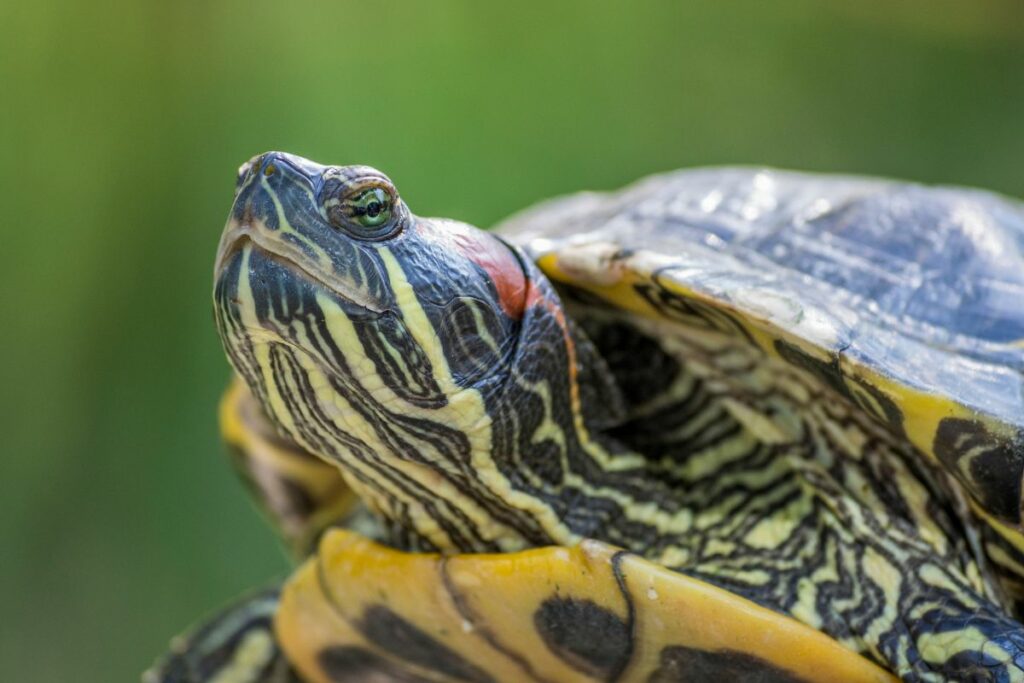
Care and Maintenance
- Habitat: A large aquarium with both water and dry basking areas is essential. Water quality and UVB lighting are crucial to their health.
- Diet: Omnivores, eat aquatic turtle food pellets, leafy greens, and occasional proteins like small fish or insects.
- Handling: Handle them minimally, and always wash your hands before and after.
7. Ball Python
Overview
Hailing from Africa, Ball Pythons are smaller pythons known for their gentle nature. When frightened, they get their name from their tendency to curl into a tight ball.
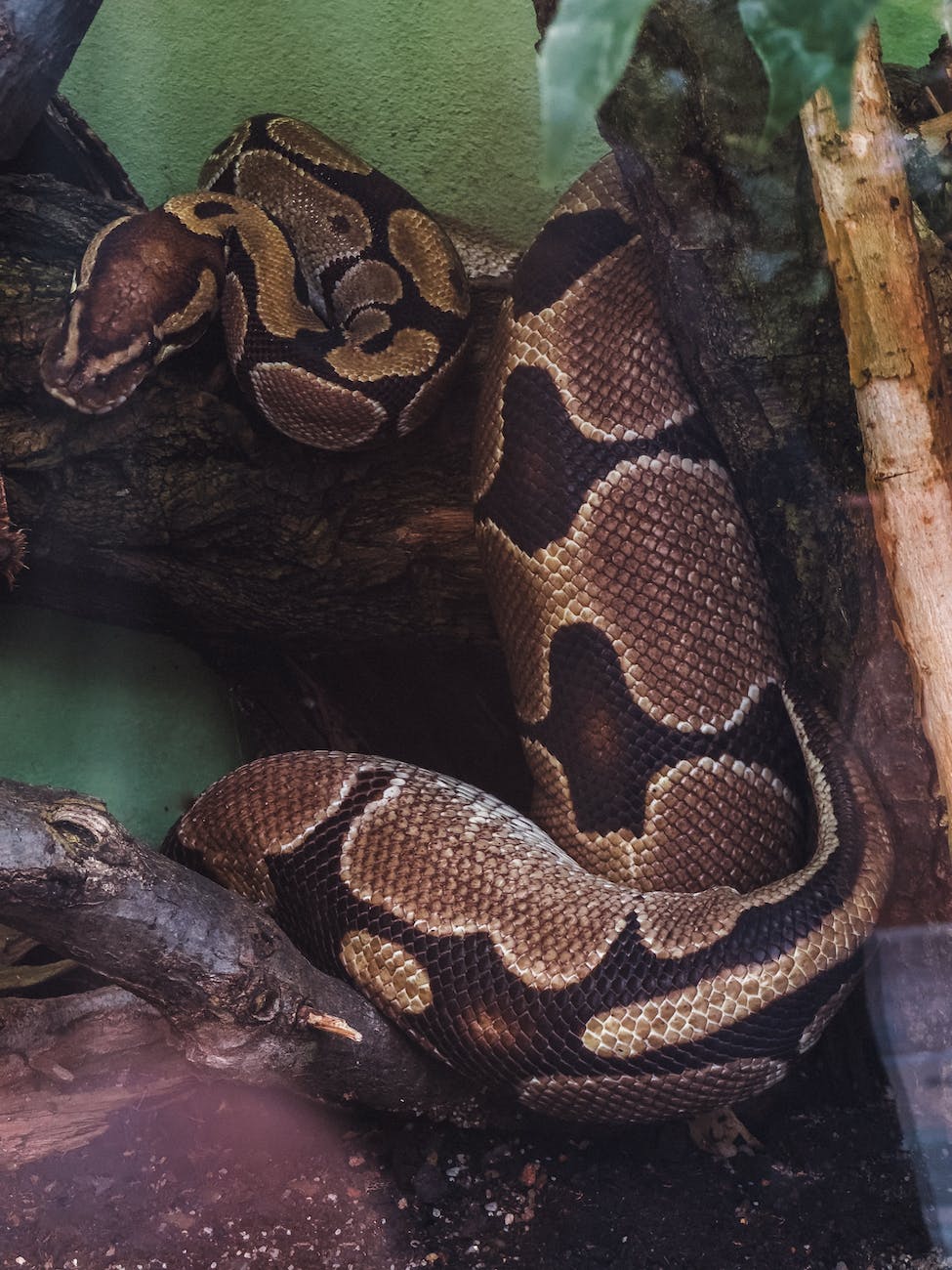
Care and Maintenance
- Habitat: A 30-gallon terrarium with hiding spots and regulated temperatures between 78°F and 88°F.
- Diet: Feed them appropriately sized frozen-thawed rats or mice.
- Handling: Once acclimated, they generally tolerate handling well. Limit the frequency to reduce stress.
8. Crested Gecko
Overview
Native to New Caledonia, Crested Geckos have unique “eyelash” ridges and come in various colors. They are nocturnal and have the fascinating ability to stick to nearly any surface.
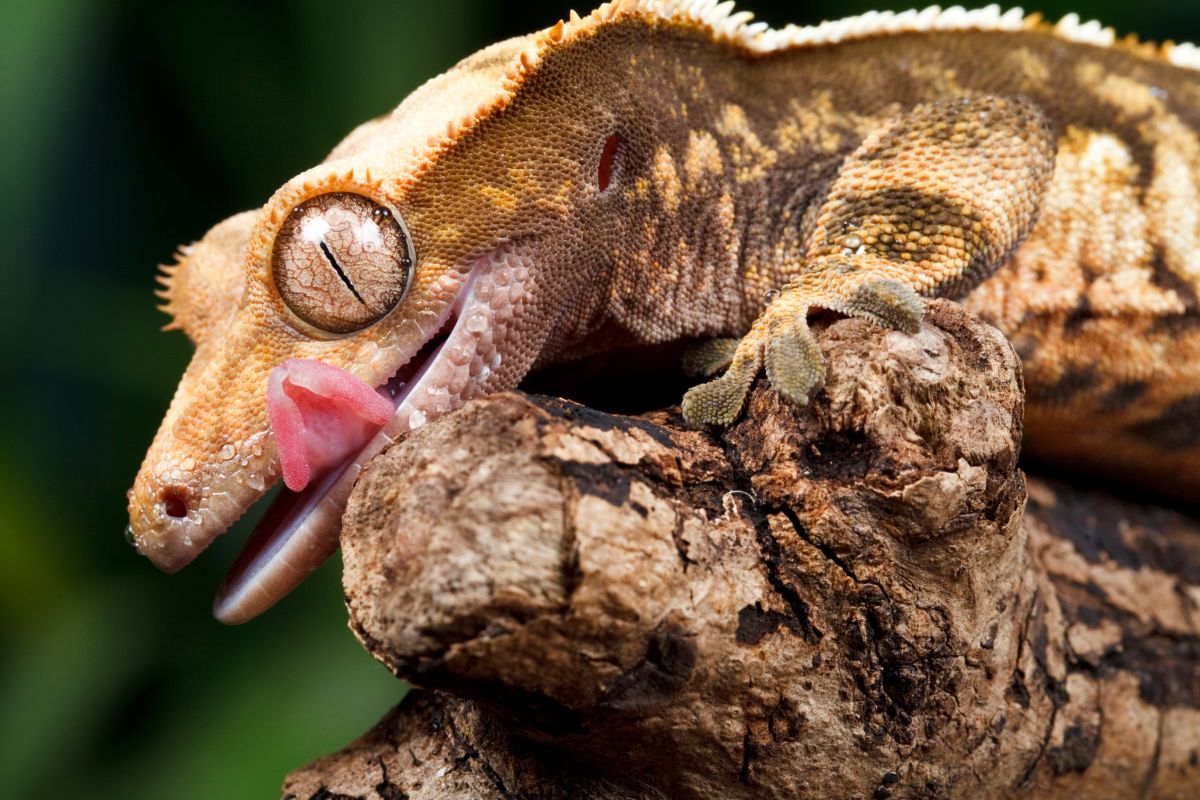
Care and Maintenance
- Habitat: Vertical terrariums with lots of foliage. Temperatures should range from 72°F to 80°F, with slightly cooler nights.
- Diet: They eat a mix of commercial crested gecko diet and insects.
- Handling: They’re relatively easy to handle but can be quick. Avoid frequent or prolonged handling sessions.
9. Blue-Tongued Skink
Overview
Originating from Australia and Indonesia, these lizards are named for their vivid blue tongues. They’re ground dwellers and are known to be quite personable.
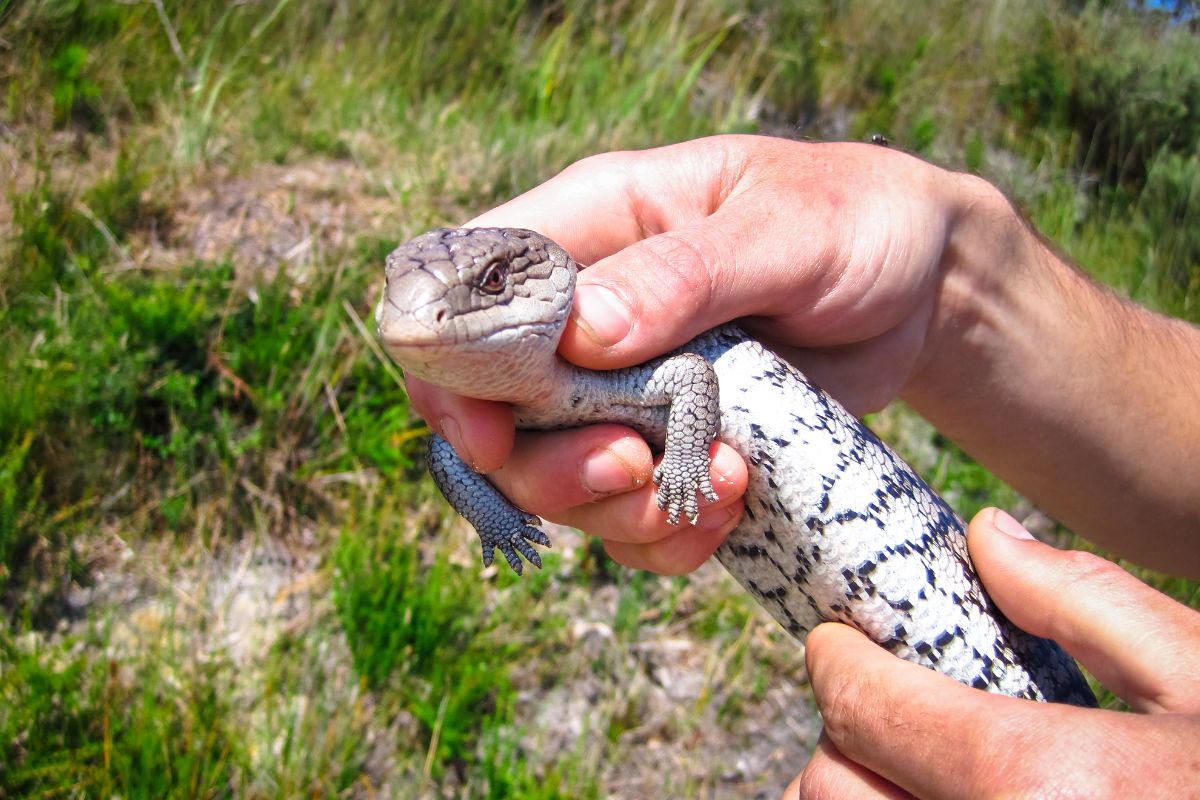
Care and Maintenance
- Habitat: A 40-gallon terrarium with a basking spot. Temperatures should be around 70°F on the cooler end and up to 90°F in the basking area.
- Diet: Omnivores, consume a varied diet of vegetables, fruits, and proteins like insects or lean meats.
- Handling: They tend to be calm and tolerate handling well. Always approach gently and avoid sudden movements.
- Each of these reptiles brings its own unique charm and care requirements. As always, delve deep into specific needs, set up their habitats appropriately, and ensure regular health checks. With love and attention, they can become wonderful companions in your home.
Basic Reptile Care Requirements
Caring for reptiles is a unique and rewarding experience but also a responsibility. Whether you’re a seasoned owner or a newbie, understanding and meeting the basic needs of your reptilian pet is crucial. Let’s delve into these fundamental requirements.
1. Habitat and Housing
Tank/Terrarium Size and Type
The size of the enclosure should be appropriate to the species and its expected adult size. Generally, it’s better to get a slightly larger habitat to give them room to explore and thrive. Remember, arboreal species will appreciate height, while ground dwellers will need more floor space.
Substrate Choices
The substrate acts as your reptile’s home flooring. Depending on the species, options can include reptile carpet, bark, sand, coconut coir, and more. It’s essential to pick a substrate that mimics their natural environment and is safe if ingested.
Heating and Lighting
Reptiles are ectothermic, meaning they can’t regulate their body temperature internally. Provide a temperature gradient in their enclosure using heating lamps or pads. UVB lighting is also crucial for many species to synthesize vitamin D and properly metabolize calcium.
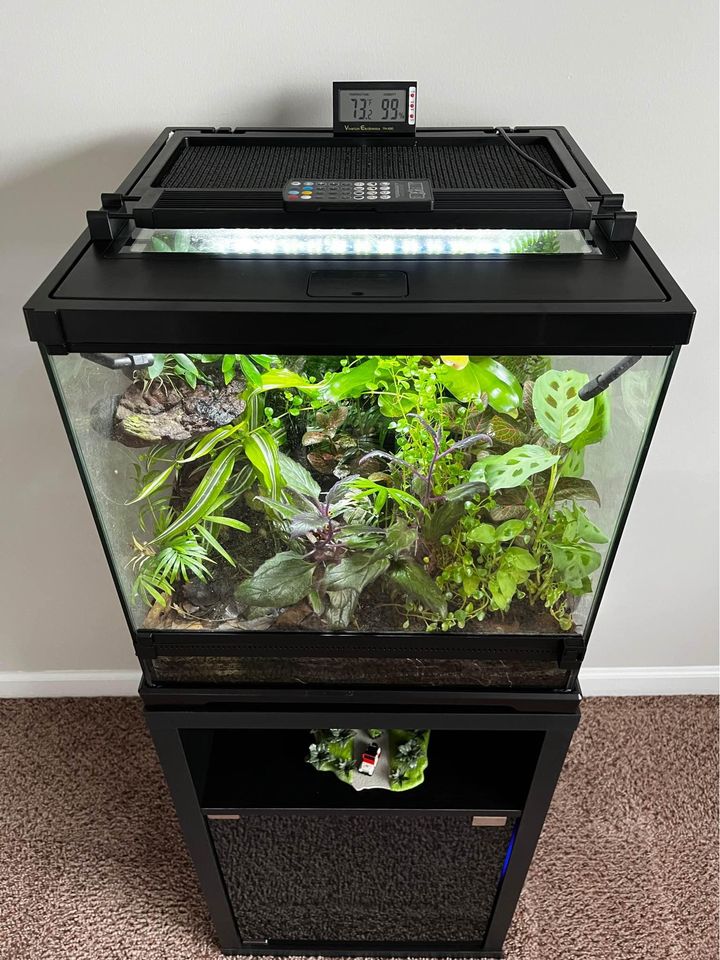
2. Diet and Feeding
Common Diets for Popular Reptiles
Diets can vary widely among reptiles. While some are strictly insectivores, like many geckos, others might be herbivores, carnivores, or omnivores. It is crucial to understand and provide a diet that aligns with their natural eating habits.
Feeding Schedules
This can vary based on the species and age of the reptile. Some need daily feedings, while others might eat weekly or even less frequently. Always refer to species-specific guidelines.
Nutritional Supplements
Supplements like calcium or multivitamins might be needed to ensure your reptile gets all essential nutrients. Dusting or gut-loading feeder insects is a common way to introduce these supplements.
3. Hygiene and Cleaning
Cleaning Frequency and Techniques
Regular cleaning prevents bacterial growth and keeps the environment healthy. Spot clean daily for waste and thoroughly clean, including substrate replacement, at least once a month or as needed.
Importance of Clean Water
Always provide fresh water. For species that require a water dish, ensure it’s kept clean and free from contaminants. Invest in a good filtration system for aquatic species and change water regularly.
4. Handling and Socialization
Safe Handling Techniques
Always approach your reptile calmly and gently. Avoid sudden movements, and always support their body fully. Frequent handling can be stressful for some species, so read their cues and give them breaks as needed.
Social Needs of Different Species
Like many snakes, some reptiles are solitary and prefer to be alone. Others, like certain geckos or turtles, might tolerate or even enjoy the company of their kind. Understand the social dynamics of your chosen species to prevent unnecessary stress or conflict.
In Summary 🦎
While each reptile species has its specific care requirements, these fundamental aspects form the foundation for a happy and healthy reptilian life. Regularly educate yourself, stay updated on best practices, and always prioritize the well-being of your scaly companion.
Health and Veterinary Care for Reptiles
Ensuring your reptile remains in prime health is a blend of regular care, keen observation, and timely veterinary intervention. Their health can sometimes be tricky to assess given their stoic nature, but understanding what to look for and when to seek professional help is crucial.
Recognizing Signs of a Healthy Reptile
- Active Behavior: While activity levels vary by species, a healthy reptile will display typical behaviors, be it basking, exploring, or hunting.
- Clear Eyes: Eyes should be bright and clear without any cloudiness or discharge.
- Healthy Skin/Shedding: Scales should be smooth, and shedding, when it occurs, should be complete. Patchy sheds or retained skin can be a concern.
- Regular Eating Habits: While appetites vary, a healthy reptile will generally eat regularly and enthusiastically.
- Consistent Waste Production: Check for regular defecation and urination, as changes can indicate potential issues.
Common Health Issues in Reptiles
- Respiratory Infections: Symptoms can include wheezing, mucus around the nostrils, and labored breathing.
- Metabolic Bone Disease: Insufficient calcium or vitamin D can result in weak bones and deformities.
- Parasites: Internal parasites can cause weight loss, irregular stools, and lethargy. External parasites like mites or ticks should be promptly addressed.
- Digestive Issues: Impaction or constipation can occur if a reptile consumes inappropriate food or substrate.
- Skin Disorders: Infections, burns from incorrect heating, or retained shed can affect the skin.
Importance of Regular Veterinary Check-ups
- Early Detection: Regular check-ups can catch potential health issues before they become severe or life-threatening.
- Dietary Guidance: Vets can provide advice on feeding and nutritional supplements based on your reptile’s specific needs and age.
- Vaccinations and Parasite Prevention: While not all reptiles need vaccinations, a vet can advise on parasite preventive measures.
Finding a Reptile-Specialized Vet
- Reptile Community: Local reptile groups or online forums can be excellent sources for vet recommendations.
- Qualifications: Ensure the vet has experience and qualifications specifically in herpetology. General vets might not have the expertise required for reptiles.
- Facilities: The clinic should have specialized equipment for reptiles, ensuring they can handle examinations and treatments effectively.
- Caring for your reptile’s health is paramount. By combining your attentive care with the expertise of a specialized vet, you can ensure that your cold-blooded companion leads a comfortable, thriving, and long life.
Safety Considerations When Keeping Reptiles
Owning a reptile is a delightful experience, but like any pet, there are safety precautions to consider, both for the reptile and for the human caretakers and companions. Addressing these concerns ensures a harmonious environment for everyone involved.
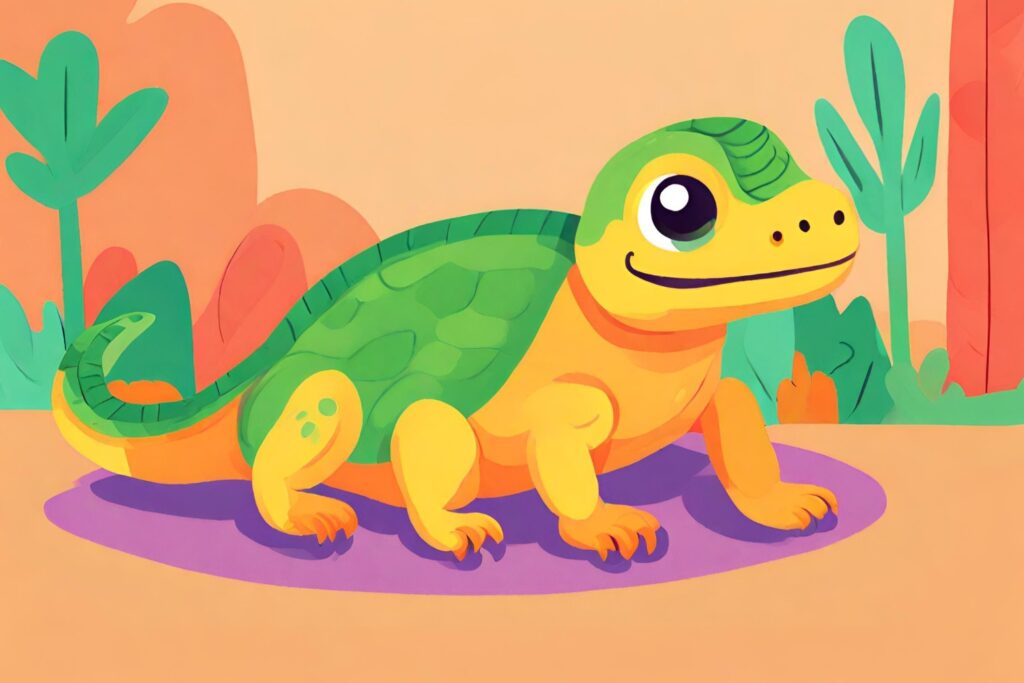
Reptiles and Other Pets
- Separation is Key: Other household pets, especially predatory ones like cats and dogs, can stress or even harm reptiles. Always supervise any interaction, though it’s best to keep them apart.
- Cross-Contamination: Different species of reptiles can carry different bacteria or parasites. Avoid using the same equipment without proper cleaning to prevent the spread.
Reptiles and Young Children
- Supervised Interactions: Children are often fascinated by reptiles but might not understand how to handle them gently. Always supervise any interaction to ensure the safety of both the child and the reptile.
- Education: Teach children about the reptile’s needs, behaviors, and potential hazards. It can be a great educational opportunity and instill a sense of respect for the animal.
Safe Storage of Reptile Food
- Live Insects: Store them in well-ventilated containers and provide them with insect food or fresh vegetables to nourish them. This keeps them alive longer and makes them more nutritious for your reptile.
- Frozen Rodents: Store them in a designated freezer. Always thaw frozen food in the refrigerator or cold water, never by cooking or microwaving, as it can alter the nutritional value.
- Prevent Escapes: Ensure live food containers are escape-proof. An insect infestation is the last thing you’d want!
Zoonotic Diseases and Prevention
- Understanding Salmonella: Many reptiles are carriers of Salmonella bacteria, which can cause illness in humans. It’s essential to understand the risks and take preventative measures.
- Hand Hygiene: Always wash your hands thoroughly with soap and water after handling reptiles or cleaning their habitats. This is the most effective way to prevent Salmonella transmission.
- Habitat Hygiene: Regularly clean and disinfect the reptile’s habitat. It minimizes the risk of bacterial growth and potential transmission.
- Awareness: Know other potential zoonotic diseases associated with reptiles and stay informed about prevention techniques.
In Summary 🦎
While reptiles can be relatively low-maintenance and delightful pets, prioritizing safety is crucial for both the reptiles and the humans around them. Careful consideration and informed precautions allow reptiles to be safely integrated into most households.
Costs and Commitment: The Financial and Time Investment in Reptile Care
Reptiles can be fascinating additions to your family, but as with any pet, financial and time commitments are involved. Whether you’re considering a tiny gecko or a large boa constrictor, understanding these commitments can help you make an informed decision.
Initial Setup Costs
- Tank or Terrarium: Depending on the size and type, these can range from $30 for smaller setups to several hundred dollars for larger, specialized enclosures.
- Heating and Lighting: Essential for most reptiles, equipment like UVB bulbs, heating lamps, and heat mats can range from $10 to $100 or more.
- Substrate: Prices vary depending on the type, with some costing just a few dollars per bag, while others, especially specialized or bioactive substrates, can be pricier.
- Decor and Hideouts: Items like climbing branches, caves, and decorative backgrounds can add up, with costs ranging from $5 to $50 or more per item.
- Initial Health Check: A first vet visit is advisable to ensure your reptile is healthy, which can cost anywhere from $50 to $200.
Ongoing Maintenance Costs
- Food: Depending on the species, food costs can range from a few dollars a month (insects) to much higher amounts for larger reptiles requiring bigger prey or specialized diets.
- Utilities: Increased electricity bills due to heating and lighting equipment.
- Vet Visits: Annual check-ups, potential treatments, or emergencies can vary widely in cost.
- Substrate Replacements and Habitat Decor: Regular replacements and occasional updates to the habitat can incur additional expenses.
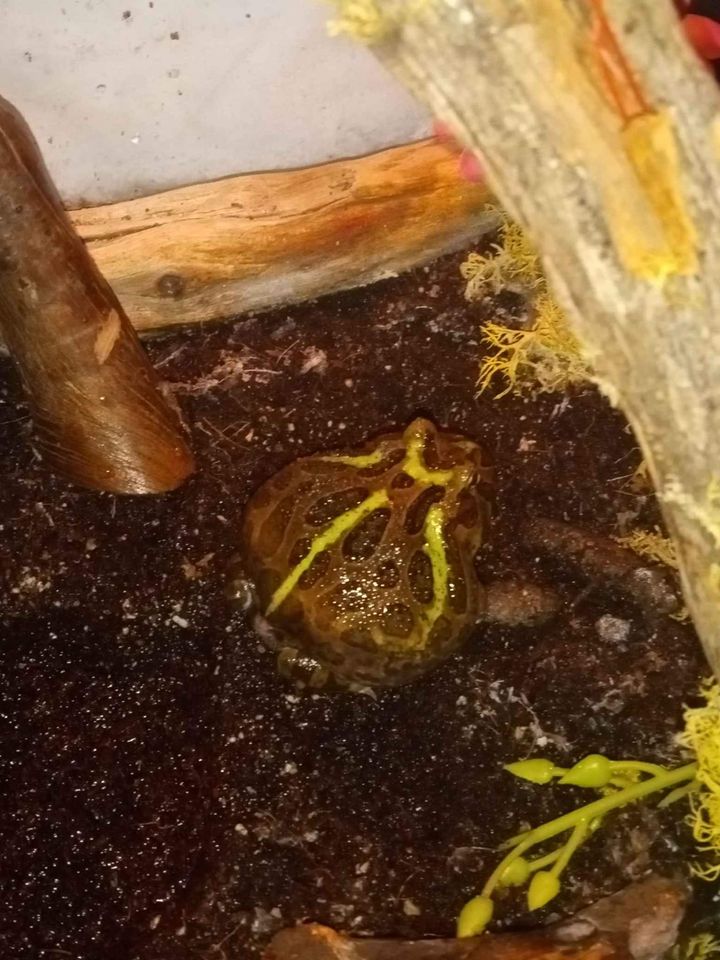
Longevity of Various Reptile Species
- Shorter-Lived Species: Animals like anoles or certain amphibians might live for 3-8 years.
- Medium Lifespan: Creatures like leopard geckos or corn snakes can live for 10-20 years.
- Long-Lived Reptiles: Tortoises, boas, and even some lizards can exceed 20 years, with some tortoises reaching over 50 years!
Commitment Required for a Healthy, Happy Reptile
- Time: Daily care routines, weekly habitat cleanings, and regular health checks are essential.
- Education: Continual learning about your reptile’s needs, behaviors, and best care practices is crucial.
- Attention: Observe your reptile, understand its behavior, and recognize signs of distress or illness.
- Long-Term Commitment: Considering the potential long lifespan of many reptiles, it’s a commitment that could last decades.
In Summary 🦎
While reptiles might have a reputation for being “easy” or “low-maintenance” pets, they require a dedicated investment of both time and money. It’s essential to understand and be prepared for these commitments to ensure the well-being of your scaly friend.
Conclusion
Embarking on the adventure of reptile ownership is a unique blend of challenges and rewards. These creatures, which often evoke the mysteries of ancient times and far-flung habitats, offer a window into a world vastly different from our own. Their behaviors, lifestyles, and sheer diversity can provide endless fascination.
However, with the joy of observing a gecko’s nocturnal hunt or a tortoise’s slow-paced exploration comes the responsibility of their care. As we’ve delved into throughout this guide, the commitment to their well-being spans various aspects, from ensuring a suitable habitat to understanding their health needs.
The challenges, though sometimes demanding, are equally matched by the rewards. The contentment of seeing a reptile thrive, understanding its nuances, and fostering a bond with such a unique creature is unparalleled.
Each reptile, whether it’s a chameleon’s vibrancy or a snake’s quiet dignity, has its own story and essence.





